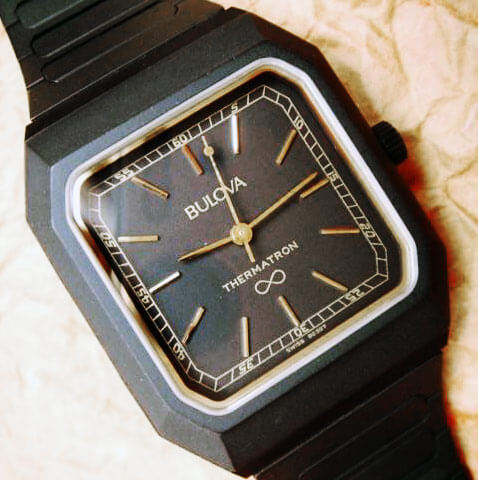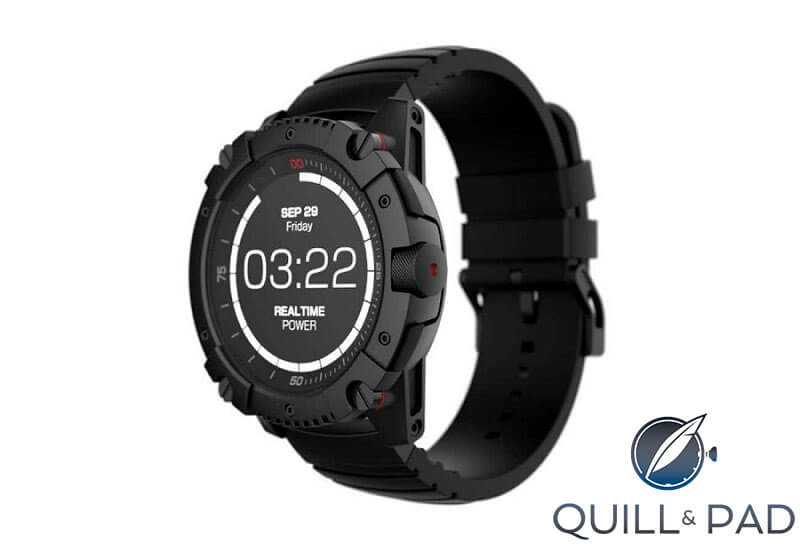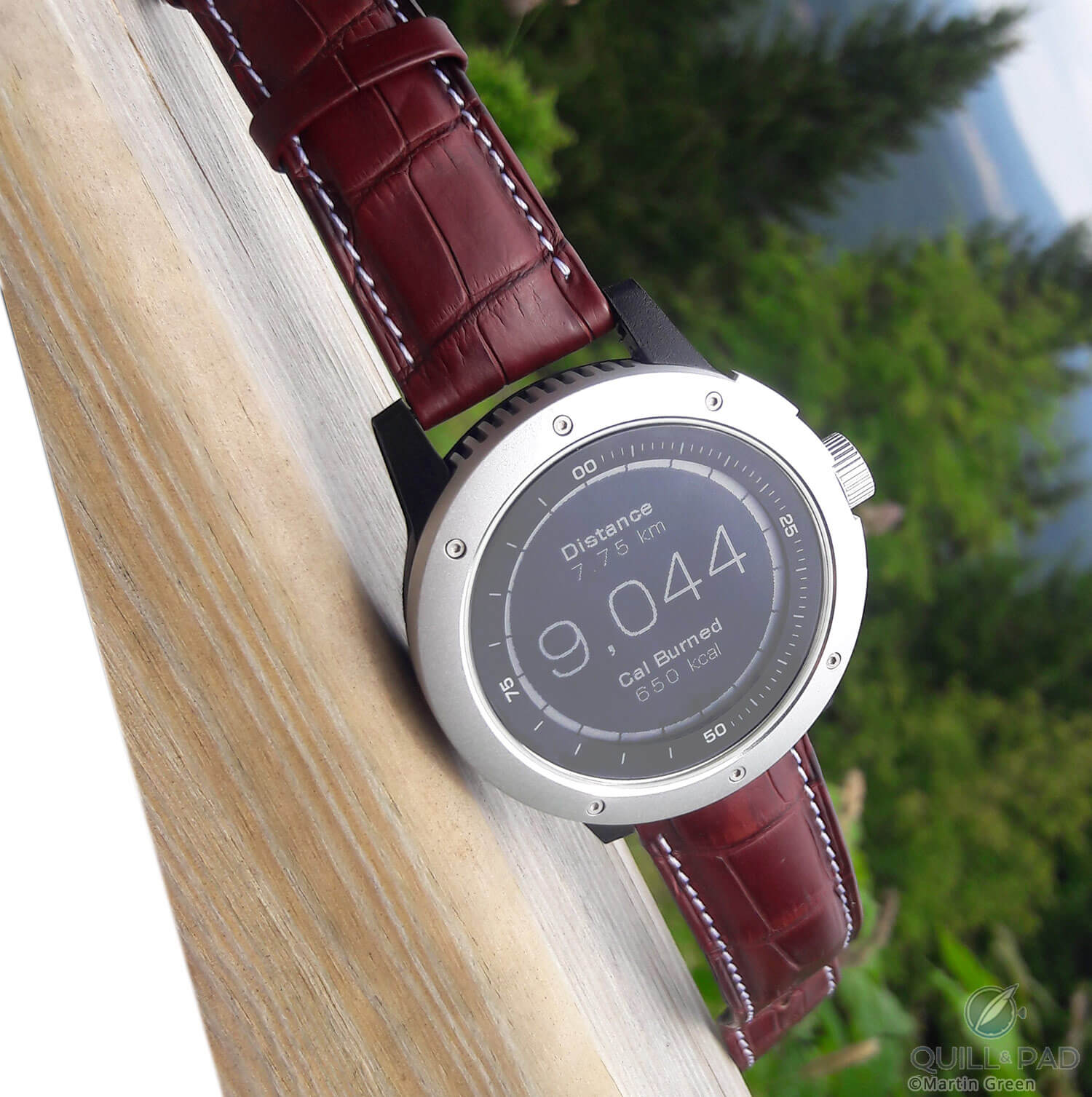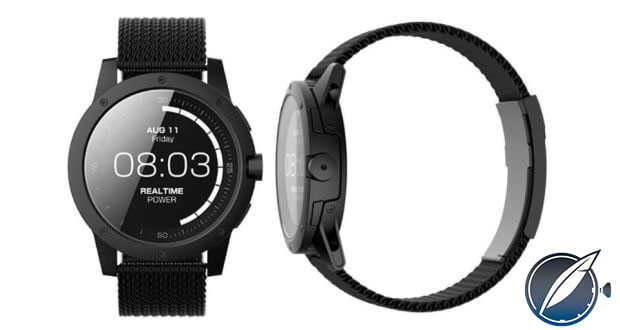Watches Powered By Body Heat: Did The Bulova Thermatron Foretell A Matrix PowerWatch Heat-Driven Future?
by Martin Green
One thing that never ceases to amaze me in the world of fine watchmaking are the incredible histories of many brands and the stories behind them.
I have a few special interests, one being the development of the quartz watch. As we all know quartz became a Greek tragedy, but fortunately one with an eventual happy end for most brands.
However, the rise of the quartz watch wasn’t a linear progression, but one filled with pitfalls and dead ends on which empires were lost.
A giant’s last act
But it wasn’t for the lack of trying, and one of the best examples of this attempt at quartz creativity is the Thermatron, which Bulova first showed at the Basel Watch Fair in 1980. It used the so-called Seebeck effect to generate energy and power the quartz movement.
This process was named after Thomas Seebeck, who discovered in 1821 that when you connect two different conductors, each exposed to a different temperature, they generate a charge. Developed by the Centre Electronique Horloger (CEH) in Neuchâtel – which has now morphed into CSEM – which also played a critical role in the development of the legendary, albeit not entirely successful, Beta 21 quartz movement, the Thermatron used two metal sheets, one connected to the case back and one to the top of the case, which acted as a thermoelectric generator.

Bulova Thermatron (base photo courtesy www.crazywatches.pl)
While this invention had the potential to revolutionize the watch industry, Bulova made a capital mistake by bringing the Thermatron to market despite knowing that not all the issues with the movement, among them the ability of its battery to hold the charge, had been ironed out.
Perhaps it was desperation that forced Bulova to make this decision. Many defective Thermatrons damaged the reputation of both the model and the brand, and it was discontinued. This was also pretty much the last nail in the coffin of Bulova as a powerhouse American watch brand.
Second act
This story has always fascinated me despite its ending because I think about the wasted potential: a watch that charges itself by merely wearing it . . . and unlike an automatic watch, you don’t even have to be active to wind your watch: just alive!
The industry has already created something similar to this for digital and/or quartz-powered watches by adding solar cells and/or so-called kinetic movements where the motion of a rotor supplies the watch with energy. Yet those are not very efficient when it comes to powering one of the most popular watch types today: the smartwatch.

Matrix PowerWatch
So imagine my surprise when I discovered that Matrix Industries has reinvented the Thermatron and put it in a product of its own called the PowerWatch.
Matrix Industries was founded in 2011 by Akram Boukai and Douglas Tham, who both happen to have extensive experience with thermoelectronics. They see this as the answer to feeding all the power-hungry wearables currently crowding the market.
Boukai and Tham’s solution also takes advantage of the Seebeck effect: the PowerWatch has a case back made of black aluminum, which is heated by one’s own body heat as it is worn. The “cold” side of the watch include the metal bezel and case body, which are separated from the case back by a layer of insulating thermoplastic. A thermoelectric generator harvests the charge that the heat creates and feeds the battery with it.
Different ending
While the Bulova Thermatron never made it to my collection, as I have yet to find a working specimen, I was eager to try out the PowerWatch. And I was not disappointed when it arrived.
For a watch that costs not even $200, it is very well manufactured with tight, even seams where the metal bezel is attached to the rest of the case. The watch breathes a certain quality and one that is higher for example than the Suunto Core.

The Matrix PowerWatch out on a hike
The most fascinating part of this wearable is that you can see the PowerWatch harvesting the energy on its screen: it displays the skin and case temperature, and bars show how much energy is being generated. The higher the difference in temperature between the two, the more efficient, and faster, the watch charges.
Unlike the Thermatron, the PowerWatch actually works. And it works well!
I dislike wearing watches when exercising, yet even in my mentally challenging, yet physically not very demanding, work as a writer the watch charged more than sufficiently.
How long does the charge last? I actually don’t know, mainly because the watch hasn’t left my wrist much. The reason for that is that the watch geek in me finds the way this watch gets its power, and the way it is visualized on the screen, utterly fascinating.
The entire watch is dedicated to the way it generates its energy, and since the people at Matrix know that this is not an easy feat to accomplish they are very frugal in how this energy is spent.
The watch has a standby mode that activates automatically when the watch is inactive, and not moving, for 45 minutes. When it detects motion, it automatically activates itself again.
It can sync with your phone, but you need to synchronize it manually so it doesn’t constantly drain the battery. Also, the other functions are pretty basic: there is a stepcounter, a stopwatch, and running mode.
It also has a calorie counter; where most smartwatches use activity-based data to give an estimate of the calories burned, the PowerWatch uses the way it generates its power to its advantage: by combining thermoelectric and temperature data it can provide a far more accurate estimate of the calorie count.
The way of the future?
The PowerWatch is not going to make anything difficult for the current generation of smartwatches, and quite honestly I doubt if that ever was the intention of Matrix Industries.
What Matrix has achieved is putting together a very convincing showcase of the technology and how well it works in real life.

Matrix PowerWatch
While Bulova killed the Thermatron by putting it on the market, Matrix has done the exact opposite. Imagine this technology in a watch like the Breitling Emergency or the Tissot T-Touch.
In fact, it could even be a lifeline to the conventional quartz watches I recently proclaimed close to death in Quartz: Past, Present, But No Future as it might give them an edge many consumers will appreciate enough to continue purchasing them.
I am actually very happy that after all these years I have the technology once introduced by the Bulova Thermatron in fully working order on my wrist. I even went to the trouble of fitting it with a custom-made alligator strap by Manufacture Jean-Rousseau, a strap that cost twice the price of the watch itself.
Crazy? Of course. Although I prefer the term profoundly happy.
For more information, please visit www.powerwatch.com.
Quick Facts Matrix PowerWatch
Case: 46 mm, metal bezel, plastic case and aluminum case back
Movement: thermoelectric generator
Functions: hours, minutes; day, date, month; calorie counter; step counter; running mode; stopwatch
Price: $199
Quick Facts Bulova Thermatron
Case: 36 x 32 mm, stainless steel with or without PVD coating
Movement: quartz with a thermoelectric generator
Functions: hours, minutes, seconds
Price: $2,000 (1982)
You might also enjoy:
Quartz: Past, Present, But No Future?
Samsung Gear S2 By De Grisogono: Boldly Going Where No Smartwatch Has Gone Before
Thoughts On The Development Of The Smartwatch Market And Its Effect On Haute Horlogerie
Leave a Reply
Want to join the discussion?Feel free to contribute!



Hello Martin,
Nice article, but serious physical-electrical calculations show that you can (with the presently available thermoelectric and electronic converting devices) hardly harvest more than 100 microWatts of electrical power within a wristwatch in average, even with the best thermal design. Now if you open the PowerWatch (X) you will find a 125mAh 3.7V battery (460mWh), and the second generation (PowerWatch 2) has a 340mAh 3.7V battery! This means that you have to wear the watch many thousands of hours to recharge its battery, while the watch also has to be powered. PowerWatch claim “Never charge again” is simply false. I find it unfortunate that Matrix Industries invested so much in this development without realizing it is not possible to power a smartwatch with thermoelectrics.
Best regards
Francois